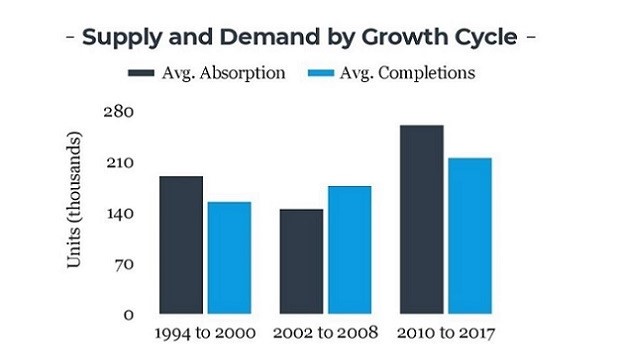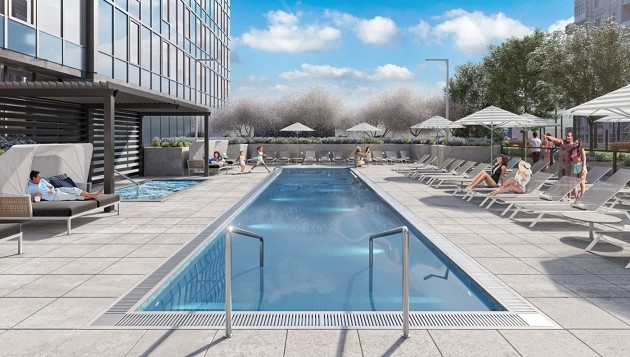 Unlike the last growth cycle, the present one has seen demand outstrip the new supply, according to Marcus & Millichap.
Unlike the last growth cycle, the present one has seen demand outstrip the new supply, according to Marcus & Millichap.
CHICAGO—Investors have worried for some time that the remarkable boom in multifamily construction is on the verge of reaching a plateau. But even though the pace of new construction has been faster than ever, the tenants keep showing up. And according to a new mid-year report on the national market from Marcus & Millichap, not only should strong absorption continue this year, but the changing demographics of the upcoming millennial generation will create long-term demand that may soften the eventual downturn.
The company forecasts that developers will finish just over 300,000 units this year, a major jump from the 85,000 done in 2011, the market’s low point. A big number like that tends to cause concern “because cranes and wood framing for new complexes are visible to investors while demand is not.”
However, absorption has matched supply for years, and 2018’s second quarter national vacancy rate of 4.6% almost equals 2015’s second quarter low of 4.5%. Furthermore, previous expansions were not favored with the level of multifamily demand that exists today. In the past two decades, annual absorption during growth cycles averaged between 144,000 units and 189,000. But ever since the start of the present boom, households’ higher propensity to rent drove the annual average absorption up to 260,000 units.
But despite that high level of demand, rent growth moderated in the second quarter, a signal perhaps that owners and property managers feel uneasy with the rapid pace of new construction, according to M&M. “Yet, by midyear it was evident apprehension over demand falling short of new supply did not materialize, potentially signaling that the market can tolerate higher rental rate growth despite supply additions.”
 Omni Group recently completed the first phase of its Old Town Park in Chicago, which has 405 luxury units, and it was 60% pre-leased on opening day and 40% occupied within 30 days.
Omni Group recently completed the first phase of its Old Town Park in Chicago, which has 405 luxury units, and it was 60% pre-leased on opening day and 40% occupied within 30 days.
And the multifamily market may keep generating additional demand above and beyond what was seen in previous cycles. “Millennial homeownership stands 8.4 percentage points lower compared with Gen X in their 20s due to the increased share of minorities who on average have a lower homeownership rate and thus a higher propensity to rent,” according to the new M&M report.
Other changes in household composition also favor multifamily demand. Over the past four decades, married couples declined from 60% to 48% of households while single-person households rose to nearly 27%. The other 25% consists of single-partner households (9%) and roommates (16%), which have grown from 17% over the same time period. M&M points out that “single-person households have the highest propensity to rent multifamily units of any household type.”

















 Copyright © 2024 ALM Global, LLC. All Rights Reserved.
Copyright © 2024 ALM Global, LLC. All Rights Reserved.